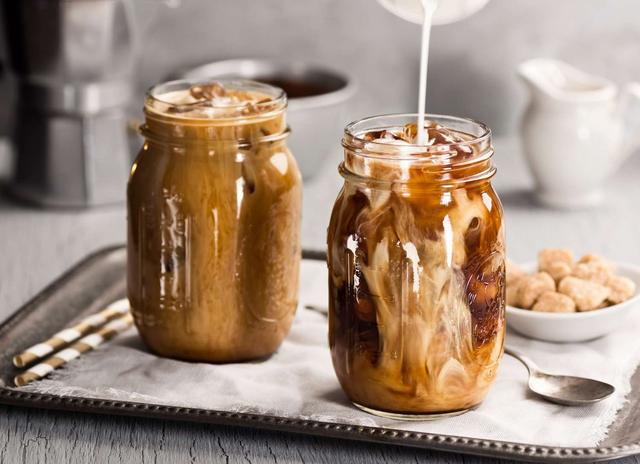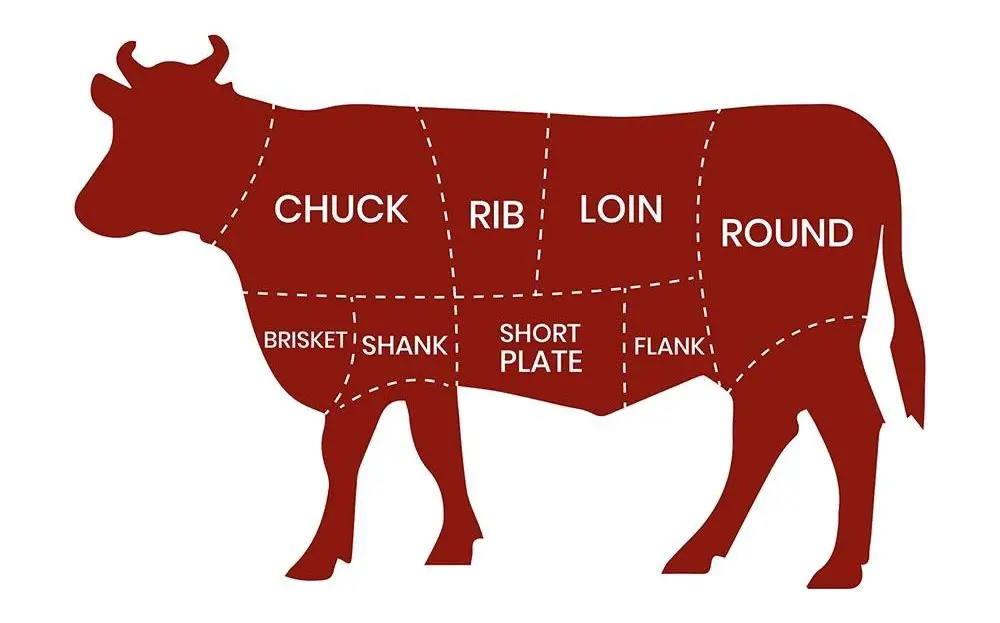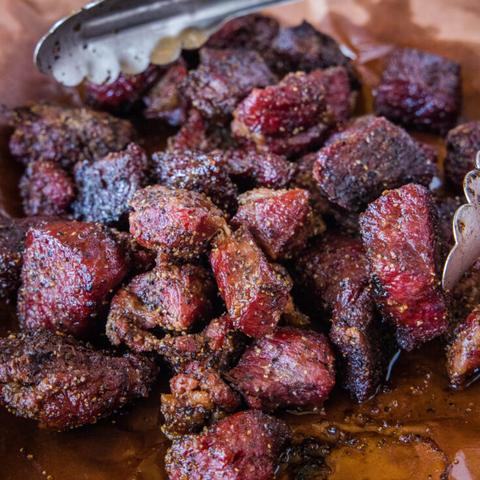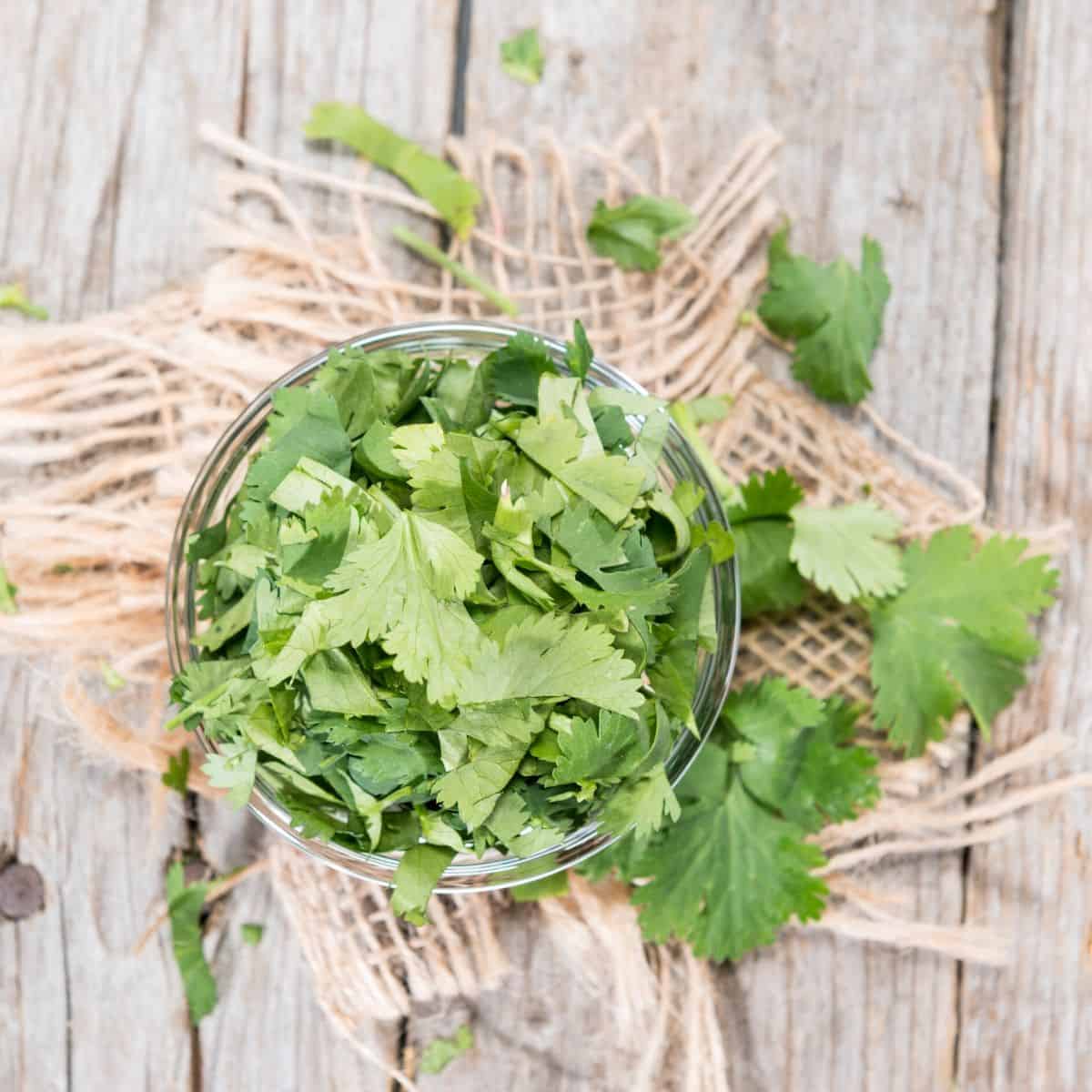
Looking for a Cilantro Substitute? Discover Delicious Alternatives to Add a Burst of Freshness to Your Recipes!
9 Best Substitutes for Cilantro
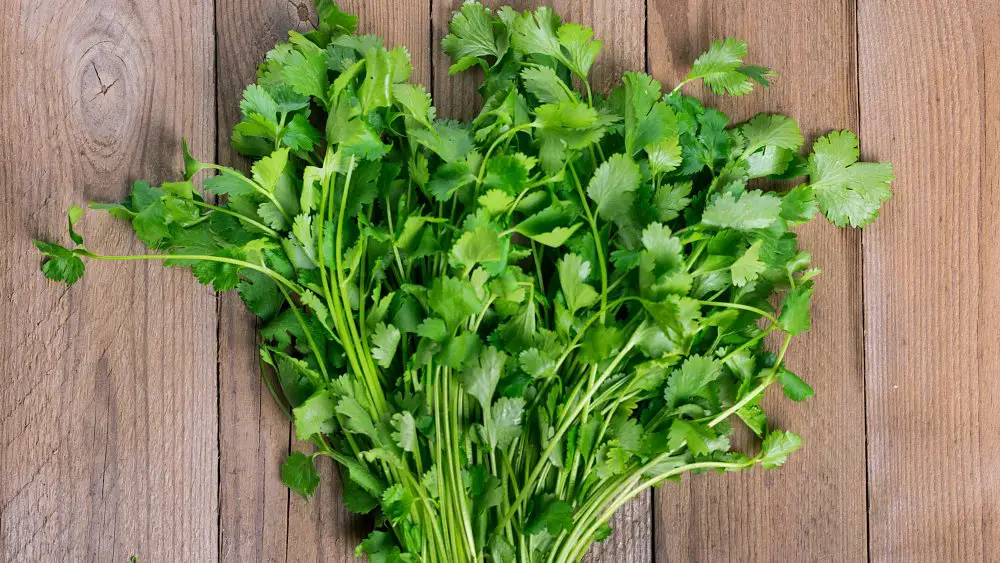
1. Parsley: While parsley may be more bitter than cilantro, it can still enhance the taste of your dish. It pairs well with meats, vegetables, and fruits, making it a good substitution for cilantro in Mexican foods like salsa and guacamole.
2. Celery Leaves: The delicate, earthy leaves on the top of celery stalks resemble cilantro leaves more than any other plant. With a similar flavor profile to cilantro, you can sprinkle celery leaves on almost anything you would cilantro.
3. Basil: Closely related to cilantro, basil has a bright and citrusy taste that makes it a perfect substitute in Asian, Italian, or Mediterranean cuisine.
4. Dill: Although different in appearance and taste from cilantro, dill can be a great replacement in seafood dishes, breakfast items like Eggs Benedict, and dishes that benefit from a bright and citrusy flavor.
5. Combination of Basil, Parsley, and Dill: Mixing these three herbs together creates a well-rounded flavor that can be used as a replacement for cilantro in soups and stews.
6. Dried Coriander: Ground coriander seeds can be used as a seasoning to add a similar aroma and flavor to fresh cilantro. While it doesn’t provide the same fresh green pop of color, it works well in soups or dishes where the flavor is masked or muted.
7. Caraway Seeds: Caraway seeds have a similar taste to ground coriander and can be used as an alternative for flavoring when cilantro or coriander is not available.
8. Cumin: Often paired with cilantro in Latin American dishes, cumin has a slightly sweet and earthy taste that can be used as a substitute. It works well in combination with chili powder for spicy dishes.
9. Curry Powder: Used in many dishes that call for cilantro, curry powder can help create a flavorful profile, particularly in Indian cuisine.
Fresh Cilantro Substitutes
If you’re looking for a substitute for fresh cilantro, there are several herbs that can provide a similar flavor profile. One option is parsley, which has a more herbaceous aroma and flavor than cilantro but pairs well with meats, vegetables, and fruits. It makes a good substitution in Mexican dishes like salsa and guacamole.
Another alternative is celery leaves, which have a delicate and earthy flavor similar to cilantro. They can be used in soups, stews, sauces, or purees as a substitute for cilantro. Just be sure to use the smaller, more tender leaves from new stalks.
Basil is closely related to cilantro and has a bright and citrusy taste that makes it a great substitute in Asian, Italian, or Mediterranean cuisine. It has a subtle spicy flavor and strong floral/citrus aroma that enhances the taste of dishes.
Dill is another herb that can be used as a replacement for cilantro in certain dishes. While it tastes different from cilantro, it works well with seafood, breakfast items like Eggs Benedict, and foods that benefit from a bright and citrusy flavor.
If you want to replicate the complex taste of cilantro, you can mix together basil, parsley, and dill. These herbs create a more well-rounded flavor that can be used in soups and stews as a replacement for cilantro.
#1 Parsley
Parsley is a popular substitute for cilantro because it pairs well with meats, vegetables, and fruits, enhancing the taste of your dish. While parsley can be more bitter than cilantro, it has a more herbaceous aroma and flavor. It is especially beneficial as a substitution in Mexican foods like salsa and guacamole.
The delicate, earthy leaves on the top of celery stalks make an excellent substitute for cilantro in soups, stews, sauces, or purees. With a very similar flavor profile to cilantro, you can sprinkle these leaves on almost anything you would use cilantro for. Be sure to use the smaller, tender leaves from new stocks for the best flavor.
Basil is closely related to cilantro and has a bright and citrusy taste that makes it a perfect substitute in many dishes, particularly Asian, Italian, or Mediterranean cuisine. Basil has a subtle spicy flavor with a strong floral/citrus aroma. It works well in Asian dishes where both basil and cilantro are often used.
While dill tastes quite different from cilantro, it can still make a great replacement in certain dishes. Dill goes best with seafood, breakfast items like Eggs Benedict, and dishes that benefit from a bright and citrusy taste and aroma. A small amount of dill can add a huge flavor punch to your dish.
For those willing to replicate the complex taste of cilantro, mixing together basil, parsley, and dill can create a more well-rounded flavor that can be used as a replacement in various dishes. This mixture works particularly well in soups and stews where their unique profiles complement each other.
Dried coriander, also known as ground coriander or coriander seeds, can be used as a substitute for fresh cilantro in soups or dishes where the flavor is masked or muted. While dried coriander doesn’t provide the same fresh aroma and bright green color as cilantro, it offers a similar taste and smell when used sparingly.
Caraway seeds can be used as a substitute for cilantro in the absence of fresh cilantro or coriander. They have a similar taste to ground coriander and can add flavoring to dishes. Caraway seeds have a sweet aftertaste that works well with marinades and enhances flavors when combined with spicy elements.
Cumin is often paired with cilantro in Latin American dishes like Mexican cuisine. It has a slightly sweet and earthy taste that can be effective in replacing cilantro. Use cumin sparingly to avoid overwhelming the dish with its flavor. Cumin and chili powder make a great combo for lovers of spicy foods.
Curry powder is commonly used in dishes that also call for cilantro, particularly Indian cuisine. It can help create a flavorful profile when you don’t have any cilantro or prefer not to use it. Choose the right type of curry powder for your dish, as there are many different varieties available.
Please note that these substitutes may not provide the exact taste of cilantro but can add brightness and freshness to your food in a slightly different way depending on the dish you’re making.
#2 Fresh Celery Leaves
If you’re looking for a substitute for cilantro, fresh celery leaves can be a great option. These delicate and earthy leaves have a similar flavor profile to cilantro and can be used in soups, stews, sauces, or purees. The leaves even resemble cilantro leaves more than any other plant. Simply sprinkle the smaller, more tender leaves on dishes as a garnish. While there may be a slight hint of celery flavor, most people won’t notice the difference.
#3 Basil
Basil is closely related to cilantro, and its bright and citrusy taste make it the perfect substitute for cilantro in many dishes, particularly Asian, Italian, or Mediterranean cuisine. Basil has a negligible amount of sweetness and also has a subtle spicy flavor, with a strong floral/citrus aroma. It’s great for use in Asian foods, where both cilantro and basil are often used.
#4 Dill
Dill is a herb that can be used as a substitute for cilantro in certain dishes. While it has a different taste compared to cilantro, it can still add a bright and citrusy flavor to your food. Dill pairs well with seafood, breakfast items, and dishes that benefit from a pickled taste and aroma. It is important to note that dill does not go well with Mexican foods, which are often sprinkled with cilantro. If you want to replicate the complex taste of cilantro, you can mix together basil, parsley, and dill. This combination creates a more well-rounded flavor that can be used as a replacement for cilantro in soups and stews.
#5 Mixed Herbs
If you are willing to replicate the complex taste of cilantro, you might want to mix together all three of the herbs we’ve just mentioned: basil, parsley, and dill. Separately, these spices all have a very unique profile that can be overwhelming to the dish on their own, but when mixed they create a more well-rounded flavor that can be used in just about any dish as a replacement for cilantro, particularly soups and stews.

Dried Substitutes for Cilantro
Dried coriander, also known as coriander seeds, can be used as a substitute for fresh cilantro in certain dishes. While it won’t provide the same fresh aroma and bright green color, dried coriander can still add a similar flavor to soups or dishes where the taste is masked or muted.
Curry powder is another dried substitute that can be used in dishes that call for cilantro. It adds a robust flavor profile and works well in Indian cuisine or any dish that requires multiple seasonings and spices.
If you’re looking for a dried herb with a similar taste to cilantro, ground coriander and caraway seeds are good options. Caraway seeds have a sweet aftertaste that pairs well with spicy elements, while ground coriander provides a similar taste to fresh cilantro.
#6 Coriander
In North America, people call the fresh version cilantro. ‘Cilantro’ is a Spanish word that refers to coriander leaves. And we call the dried version coriander.Meanwhile, the Europeans have different terminology for this same plant; they call it coriander, while the seeds are called coriander seeds. Of course, you can use dried coriander to add a cilantro flavor to a dish. However, it won’t provide an adequate substitute for fresh cilantro in dishes like tacos or salsa, where the fresh herb is pivotal. In those cases, it’s best to use celery leaves or parsley instead.
#7 Caraway
Caraway seeds can be used as a substitute for cilantro in dishes that require a similar flavor profile. Caraway has a sweet aftertaste and works well when combined with spicy elements. It is commonly used in marinades and can add depth to the dish. While it may not replicate the exact taste of cilantro, caraway seeds can provide a flavorful alternative when cilantro is not available or preferred.
#8 Cumin
Cumin is a popular spice that can be used as a substitute for cilantro in certain dishes. It has a slightly sweet and earthy taste that complements many cuisines, particularly Mexican and Indian. Cumin pairs well with spicy flavors, so if you love heat in your food, combining cumin with chili powder can create a great flavor combination. Keep in mind that cumin has a strong flavor, so use it sparingly to avoid overpowering your dish with its taste.
#9 Curry Powder
Curry powder is a versatile spice blend that can be used as a substitute for cilantro in dishes that require a robust flavor profile. It is commonly used in Indian cuisine and consists of various spices such as turmeric, cumin, coriander, fenugreek, and chili powder. The combination of these spices creates a complex and aromatic taste that can enhance the flavors of your dish. While curry powder may not provide the exact taste or aroma of cilantro, it can still add depth and richness to your meals. It is important to note that there are different types of curry powders available, so choose one that complements the flavors of your specific dish.
Frequently Asked Questions
1. Can I use parsley as a substitute for cilantro?
Yes, parsley can be used as a substitute for cilantro in dishes like salsa and guacamole. While the taste is slightly different, parsley can still enhance the flavor of your dish.
2. How can I use celery leaves as a substitute for cilantro?
Celery leaves can be used in soups, stews, sauces, or purees as a substitute for cilantro. The flavor profile of celery is similar to cilantro, and the leaves resemble cilantro leaves.
3. What are some other herbs that can be substituted for cilantro?
Basil, dill, and a mixture of basil, parsley, and dill can also be used as substitutes for cilantro in various dishes. Each herb has its own unique flavor profile that can add brightness and freshness to your food.
4. Can dried coriander be used as a substitute for fresh cilantro?
Dried coriander can provide a similar aroma and flavor to fresh cilantro when added to dishes where the flavor is masked or muted. However, it may not be an adequate substitute for fresh cilantro in dishes where the fresh herb is pivotal.
5. Why do some people think cilantro tastes like soap?
Some people have a genetic variation in olfactory-receptor genes that allows them to strongly perceive the soapy-flavored aldehydes in cilantro leaves. This genetic difference leads to the perception of soap-like taste.
6. Are there any herbs that can replicate the exact taste or aroma of cilantro?
No herb can replicate the exact taste or aroma of cilantro. However, using alternative herbs such as parsley, celery leaves, basil, or dill can help achieve a similar taste or appearance in a dish.
Are Coriander and Cilantro the Same?
In North America, people call the fresh version cilantro. ‘Cilantro’ is a Spanish word that refers to coriander leaves. And we call the dried version coriander.Meanwhile, the Europeans have different terminology for this same plant; they call it coriander, while the seeds are called coriander seeds. Of course, you can use dried coriander to add a cilantro flavor to a dish. However, it won’t provide an adequate substitute for fresh cilantro on dishes like tacos or in salsa, where the fresh herb is pivotal. In those cases, it’s best to use celery leaves or parsley instead.
What If I Use Dried Coriander in Place of Fresh?
Using dried coriander as a substitute for fresh cilantro can provide a similar flavor profile in certain dishes, but it may not be as effective in others. Dried coriander refers to the seeds of the cilantro plant that have been dried and ground into a fine seasoning. While it can add a similar aroma and taste as fresh cilantro, it lacks the fresh, vibrant green color and aromatic qualities that fresh cilantro provides.
In dishes where the flavor of cilantro is masked or muted, such as soups or stews, dried coriander can be used as a substitute. It can help enhance the overall flavor of the dish, although it may not provide the exact same taste and aroma as fresh cilantro. However, in dishes like tacos or salsa where the fresh herb is pivotal, using dried coriander may not provide an adequate substitute. In these cases, alternatives like celery leaves or parsley may be a better choice.
It’s important to note that using dried coriander instead of fresh cilantro will result in a different flavor profile. The intensity and freshness of cilantro cannot be replicated with dried coriander alone. So while dried coriander can add some of the flavors associated with cilantro, it may not fully capture its unique taste and aroma.
Why does cilantro taste like soap to some people?
People who think cilantro tastes like soap have a genetic variation in a group of olfactory-receptor genes that allows them to strongly perceive the soapy-flavored aldehydes in cilantro leaves. This genetic difference affects their perception of the herb and can make it taste unpleasant or even repulsive to them.
Cilantro has a unique taste that is loved by many but disliked by some. The intensity of its taste can vary, but for those who find it soapy, it can be difficult to understand why others enjoy it. It’s important to remember that taste preferences are subjective and can vary from person to person based on genetics and personal experiences.
Conclusion
In conclusion, cilantro is a versatile herb that adds brightness and citrusy flavor to a variety of dishes. However, it can be quite divisive, with some people loving it and others finding it bitter and soapy. If you fall into the latter category or have an allergy to cilantro, there are several alternatives you can use to still add a fresh herb aroma to your dishes.
Parsley is a good substitute for cilantro, especially in Mexican foods like salsa and guacamole. The delicate leaves on celery stalks also make a great substitute, as they have a similar flavor profile to cilantro. Basil is closely related to cilantro and can be used as a substitute in Asian, Italian, or Mediterranean cuisine.
Dill may taste different from cilantro but can still be used as a replacement in seafood dishes or recipes that benefit from its bright and citrusy taste. Mixing basil, parsley, and dill together can create a well-rounded flavor that works well in soups and stews.
While dried coriander (the seeds of the cilantro plant) can be used as a seasoning to add similar aroma and flavor to dishes, it won’t provide the same freshness as fresh cilantro. Other alternatives include caraway seeds for flavoring, cumin for spicy dishes, and curry powder for robust flavors.
In summary, while there is no exact substitute for the unique taste of cilantro, these alternatives can help you achieve a similar flavor or appearance in your dishes. Experiment with different herbs and spices to find the ones that work best for your specific recipes.
In conclusion, when it comes to finding a substitute for cilantro, there are several options available. Whether you opt for parsley, basil, or even dill, these alternatives can provide a similar flavor profile to enhance your dishes. Experiment with different herbs to discover your preferred substitute and enjoy exploring the diverse world of flavors in your cooking.
Learn More About Grilling
If you want to learn more about grilling, check out these other helpful resources!

